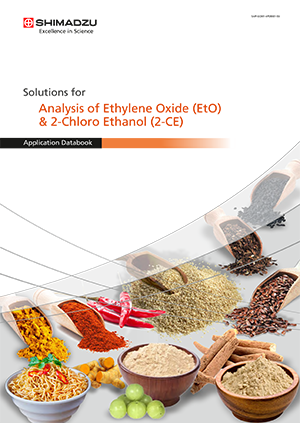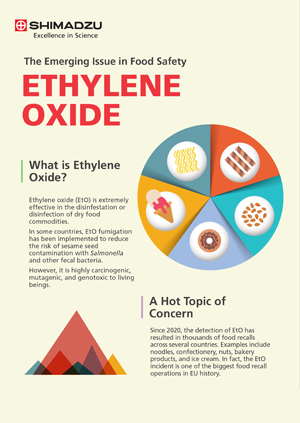Ethylene Oxide - GCMS Workflows and Solutions
Solutions for Application Databook Analysis of Ethylene Oxide (EtO) & 2-Chloro Ethanol (2-CE)
Even though Ethylene oxide (EtO / EO) is well-known to be toxic compound with carcinogenic and mutagenic concerns, it has been widely used for fumigation in the Food industry for effectively reducing or eliminating microbiological contamination with bacteria / fungi. Once in contact with food, EtO undergoes various reactions within the matrix, further producing reaction products such as ethylene glycol, 2-chloroethanol (2-CE) and 2-bromoethanol, which are also toxic in nature. Hence, the use of EtO for food fumigation has been phased out in many countries worldwide, due to toxicological concerns. In the EU, the use of EtO for the disinfection of foodstuffs, e.g. in storage areas, is not permitted (ECHA, 2020). EU has proposed separate maximum residual limits (MRLs) for EtO and its primary metabolite 2-CE in different food and agriculture commodities ranging from 0.02 to 0.1 mg/kg (Commission Regulation (EU) 2015/868).
The recent recall of food products exported to the EU due to non-compliance with EU regulations, has highlighted the importance of quantitation of EtO & 2-CE residues in food.
To ensure the quality and safety of food products, the European Rapid Alert System for Food and Feed (RASFF) prohibits the sales of goods exceeding the MRL values of 0.05 mg/kg (or 50 ppb) for the sum of EtO and 2-CE.
The Emerging Issue in Food Safety - Ethylene Oxide
Ethylene oxide (EtO) is extremely effective in the disinfestation or disinfection of dry food commodities. In some countries, EtO fumigation has been implemented to reduce the risk of sesame seed contamination with Salmonella and other fecal bacteria. However, it is highly carcinogenic, mutagenic, and genotoxic to living beings.
Since 2020, the detection of EtO has resulted in thousands of food recalls across several countries. Examples include noodles, confectionery, nuts, bakery products, and ice cream. In fact, the EtO incident is one of the biggest food recall operation in EU histroy.




